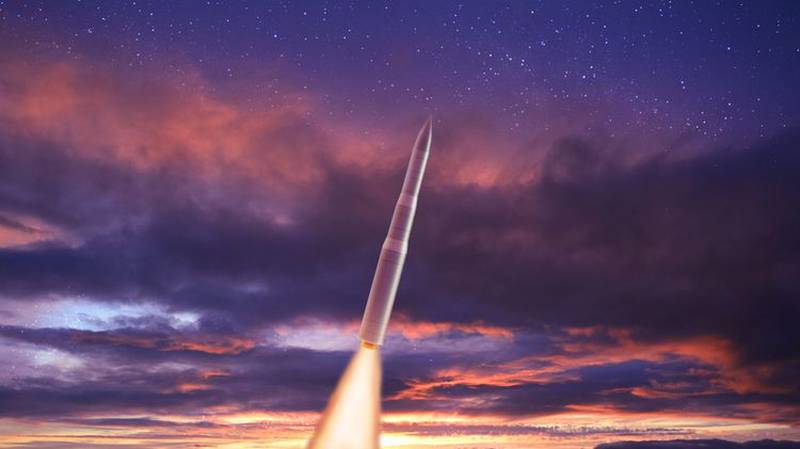In a world where instability and threats are on the rise, it is disturbing that some in Congress are calling to weaken America’s strategic nuclear deterrent, even to the point of offering legislative proposals to severely curtail vital modernization efforts. The reality is that the safety and security of our nation demands a robust, modern nuclear triad — one that deters adversaries, reassures allies, and promotes stability.
This is not a new development; it is an enduring reality, especially given the increasingly aggressive behavior of America’s nuclear-armed adversaries. As former U.S. Strategic Command leader Adm. Charles Richard explained a few years ago: “I will tell you, the current situation is vividly illuminating what nuclear coercion looks like and how you, or how you don’t, stand up to that.”
Given what is at stake, the latter course of action is not a viable option. We must continue to invest in nuclear triad modernization efforts.
In the Cold War, the U.S. was primarily concerned with deterring the Soviet threat. Today, that threat is far broader and more complex. It involves China’s nuclear breakout, a modernized Russian nuclear arsenal, and Iran and North Korea’s aggressive nuclear ambitions. However, the U.S. is still reliant upon nuclear triad capabilities from the Cold War, with some elements dating back to the Eisenhower and Kennedy administrations. Aging equipment and infrastructure cannot be sustained indefinitely.
The need for a modernized set of nuclear triad capabilities comes down to a very simple but crucial precept: to cause an adversary decision-maker to refrain from certain acts, under certain circumstances, out of fear that if they take those actions, they will fail to achieve their objectives and/or suffer unacceptable consequences. This is deterrence 101, and it demands that we hold our adversaries in check with a robust, modern nuclear triad. That is what the Cold War-era phrase “peace through strength” described — that we could secure our goals of peace and stability through an effective strategic deterrent.
This approach has been incredibly successful since the end of World War II. However, the advanced age of our nuclear triad is eroding its deterrent value. Adversaries understand that it is increasingly difficult for the U.S. to sustain and, if necessary, employ these systems, and they’re taking advantage of these circumstances to modernize, upgrade and increase their nuclear arsenals. It is time for a reset.
The nuclear modernization strategy outlined by the Department of Defense, multiple presidential administrations, and several sessions of Congress has continued to support the highly integrated, mutually reinforcing approach afforded by the triad. Nuclear ballistic missile-equipped submarines, when deployed at sea, provide the attributes of stealth; it is very hard to detect these vessels, thereby assuring the U.S. will have means to retaliate, even if other elements of the enterprise are struck.
Bombers are a far more visible and flexible leg of the triad, clearly signaling U.S. resolve to adversaries and allies when they deploy to hot spots around the globe.
The always-on-alert land-based intercontinental ballistic missile leg of the triad ensures that a sufficient volume of highly responsive nuclear-armed missiles reside on U.S. soil, such that an adversary will not think they can get away with a first strike on the U.S. homeland. Add this to an adversary’s calculus: It may be one thing to strike a nuclear-equipped submarine or bomber somewhere around the world, but striking an ICBM site on U.S. territory would be akin to crossing a suicidal threshold.
The new triad components include the Columbia-class submarine, the B-21 Raider bomber and the Sentinel ground-based strategic deterrent enterprise. New bomber- and submarine-launched cruise missiles are equally necessary to counter adversaries’ coercive strategies and to strengthen assurance with our allies. And all must be tied together with a modernized command-and-control system.
Individually, each are massively complex. Combined, they represent a generational level of effort that demands significant resources, concerted focus and sustained political will.
RELATED

Of course, challenges have emerged tied to unforeseen engineering hurdles, supply chain issues and learning curve factors. This has translated to budget increases and schedule slips. While frustrating, such turbulence should be expected given the scale and scope of the programs.
Many of these challenges stem from too little investment in the triad for too many years. Notably, cost projection increases tied to the Sentinel program are largely not about the new ICBM. Instead, they are tied to the silo infrastructure, which is in poor condition and must be rehabilitated far more than originally thought. While regrettable, the reality is that deferred bills eventually come due.
Those who question the necessity of an effective nuclear triad should consider events around the globe. China is aggressively expanding its sphere of influence through force in the Pacific. Russia continues its illegitimate invasion of Ukraine. Iran is destabilizing much of the Middle East, and North Korea continues to threaten our allies across the Pacific as well as our homeland with its nuclear weapons.
The threats are very real and extremely serious. Our adversaries have interests and values fundamentally opposed to our own. Hoping that they will miraculously seek peace is unrealistic. We need to ensure our national leaders are empowered with credible, reliable military options to manage these threats. That begins with an effective, modern nuclear triad. We must stay the course.
Retired U.S. Air force Gen. Kevin Chilton is the explorer chair at the Mitchell Institute for Aerospace Studies. He previously led U.S. Strategic Command.
- SEO Powered Content & PR Distribution. Get Amplified Today.
- PlatoData.Network Vertical Generative Ai. Empower Yourself. Access Here.
- PlatoAiStream. Web3 Intelligence. Knowledge Amplified. Access Here.
- PlatoESG. Carbon, CleanTech, Energy, Environment, Solar, Waste Management. Access Here.
- PlatoHealth. Biotech and Clinical Trials Intelligence. Access Here.
- Source: https://www.defensenews.com/opinion/2024/06/05/us-security-demands-continued-nuclear-triad-investment/



